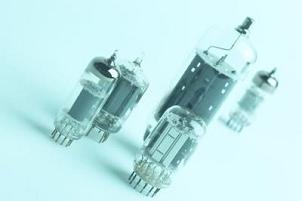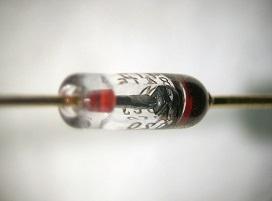Any electronic device works in accordance with its characteristics. Using them when designing various devices of any complexity, you can create a mathematical model of a device. On this principle, programs have been created that use mathematical modeling and allow you to see the operation of the electronic circuit on the monitor screen. They greatly help in the development of devices. Connecting to various nodes virtual

oscilloscopes, you can verify the operability of the future product and, if necessary, make adjustments. On their basis, you can not only learn how to design electronic devices, but also study some of the features in the operation of elements, deepen your theoretical knowledge. As an example, we can consider one of the basic elements in electronics based on the current-voltage characteristic, hereinafter the I – V characteristic of the diode. These devices are good in that there are several types. All of them are successfully used in electronic circuits. These devices have proven themselves over the years of operation in equipment for various purposes.

For the first time such an element was assembled in its “tube” version and was used for a rather long time in the design of various circuits. Such devices are used in tube amplifiers, which are still produced by individual companies. The I – V characteristic of the diode in this case is described by the Boguslavsky – Langmuir formula. According to this formula, the current flowing through the device is directly proportional to the voltage to the degree of three second times the coefficient. As you can see, in the initial section of the I – V characteristic of the diode there is nonlinearity. This curve “straightens” when the operating point reaches the nominal parameters.
The parameters of the semiconductor device are almost close to ideal. The nonlinearity in the initial section depends on the material from which the crystal is made. Also of great importance is the amount of impurities, that is, the quality of the raw materials. The I – V characteristic of a semiconductor diode can be represented in the form of a curve that varies approximately exponentially and has an inflection point before it reaches its operating characteristic. In silicon samples, the operating point “breaks” at the level of 0.6-0.7 Volts. It is closest to the ideal value of the I – V characteristic of the Schottky diode, here the point of access to the operating characteristic will be in the region of 0.2-0.4 Volts. But it should be borne in mind that with a voltage of more than 50 volts this property disappears.
The so-called zener diode has a curve “inverse” to the ordinary element. That is, with an increase in voltage, the current practically does not appear until a certain threshold is reached, after which it grows avalanche-like.
The manufacturers of these elements try not to indicate the exact characteristics, since they differ quite significantly even within the same batch. In addition, you can take a diode, the CVC of which is accurately measured in the laboratory and change its operating temperature. And the specifications will change. Usually, some limits of the stable operation of the electronic element are indicated depending on the conditions of its operation.